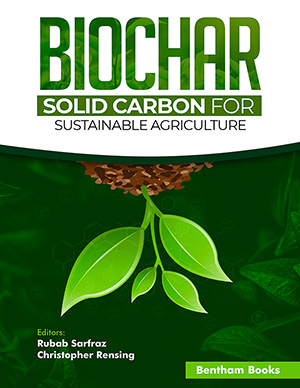
摘要
癌症和炎症性疾病是世界范围内两个重要的公共卫生问题,具有重大的社会经济影响。尽管有一些努力,目前的治疗平台有严重的局限性。因此,开发新的治疗策略来治疗这些疾病是当务之急。除了目前的治疗方法外,天然化合物的利用也为癌症和炎症疾病的治疗开辟了新的视野。这些天然化合物既可以单独使用,也可以与标准的癌症治疗方式(如化疗、放疗和免疫治疗)联合使用。白藜芦醇是一种多酚化合物,存在于葡萄和其他食物中。研究发现,该药物具有广泛的药理作用,包括抗癌、抗炎、抗微生物和抗氧化活性。近年来,白藜芦醇的抗肿瘤和抗炎作用已成为临床和临床前研究的热点。越来越多的证据表明,白藜芦醇通过靶向多种细胞和分子机制发挥其治疗作用。在白藜芦醇调控的细胞和分子靶标中,microRNA (miRNAs)已成为关键靶标。miRNA是短的非编码RNA,起表观遗传调节作用。这些分子参与了癌症和炎症疾病的起始和进展的许多过程。在此,我们总结了在癌症和炎症疾病中直接/间接受白藜芦醇影响的各种miRNA。
关键词: 白藜芦醇,microRNA,癌症,治疗,非编码RNA,非癌症疾病。
[http://dx.doi.org/10.2174/1381612811319340002] [PMID: 23448444]
[http://dx.doi.org/10.1002/jcb.24539] [PMID: 23495037]
[http://dx.doi.org/10.3390/nu8050280] [PMID: 27187448]
[http://dx.doi.org/10.1007/s40292-019-00324-6] [PMID: 31264084]
[http://dx.doi.org/10.2174/1381612825666190829154934] [PMID: 31465276]
[http://dx.doi.org/10.1186/s12935-019-0906-y] [PMID: 31341423]
[http://dx.doi.org/10.4103/0973-1482.176167] [PMID: 27461603]
[http://dx.doi.org/10.1038/cgt.2016.61] [PMID: 27834357]
[http://dx.doi.org/10.1038/cgt.2016.62] [PMID: 27857058]
[http://dx.doi.org/10.1002/jcp.25990] [PMID: 28475219]
[http://dx.doi.org/10.1016/j.canlet.2016.07.001] [PMID: 27392648]
[http://dx.doi.org/10.1038/cgt.2015.68] [PMID: 26742580]
[http://dx.doi.org/10.1016/j.canlet.2018.01.029] [PMID: 29331419]
[http://dx.doi.org/10.1002/jcp.26055] [PMID: 28617957]
[http://dx.doi.org/10.1002/ijc.30224] [PMID: 27280688]
[http://dx.doi.org/10.1111/nyas.12819] [PMID: 26190093]
[http://dx.doi.org/10.1016/j.drudis.2019.04.007] [PMID: 30980904]
[http://dx.doi.org/10.1016/j.bcp.2012.02.004] [PMID: 22342289]
[http://dx.doi.org/10.1021/jf301479v] [PMID: 22571175]
[http://dx.doi.org/10.1016/j.bcp.2010.07.003] [PMID: 20637737]
[http://dx.doi.org/10.1038/nrm3854] [PMID: 25118717]
[http://dx.doi.org/10.1038/nrc3932] [PMID: 25998712]
[http://dx.doi.org/10.1038/nbt.3947] [PMID: 28829439]
[http://dx.doi.org/10.3389/fendo.2018.00402] [PMID: 30123182]
[http://dx.doi.org/10.1016/0092-8674(93)90529-Y] [PMID: 8252621]
[http://dx.doi.org/10.1038/nature03049] [PMID: 15531879]
[http://dx.doi.org/10.1126/science.1178705] [PMID: 19965479]
[http://dx.doi.org/10.1038/nsmb.1733] [PMID: 19966796]
[http://dx.doi.org/10.1016/S0092-8674(03)00801-8] [PMID: 14567918]
[http://dx.doi.org/10.1038/nrm3838] [PMID: 25027649]
[http://dx.doi.org/10.1101/gad.1705308] [PMID: 18923076]
[http://dx.doi.org/10.1016/j.cell.2013.11.027] [PMID: 24360278]
[http://dx.doi.org/10.1073/pnas.1006432107] [PMID: 20699384]
[http://dx.doi.org/10.3322/caac.21492] [PMID: 30207593]
[http://dx.doi.org/10.3322/caac.21551] [PMID: 30620402]
[http://dx.doi.org/10.1016/j.lfs.2019.05.005] [PMID: 31075231]
[http://dx.doi.org/10.2174/13894501113149990189] [PMID: 23834152]
[http://dx.doi.org/10.3390/molecules22030474] [PMID: 28300789]
[http://dx.doi.org/10.18632/aging.100542] [PMID: 23524286]
[http://dx.doi.org/10.18632/aging.100532] [PMID: 23518473]
[http://dx.doi.org/10.18632/aging.100445] [PMID: 22436213]
[PMID: 24020126]
[http://dx.doi.org/10.1007/s00403-017-1784-6] [PMID: 28936555]
[http://dx.doi.org/10.18632/oncotarget.25339] [PMID: 29872500]
[http://dx.doi.org/10.18632/oncotarget.3088] [PMID: 25605016]
[http://dx.doi.org/10.1371/journal.pone.0103760] [PMID: 25072848]
[http://dx.doi.org/10.1111/j.1440-1681.2011.05660.x] [PMID: 22211760]
[PMID: 17201156]
[http://dx.doi.org/10.1038/cddis.2016.6] [PMID: 26890143]
[http://dx.doi.org/10.3892/ijo.2015.2863] [PMID: 25646654]
[http://dx.doi.org/10.1016/j.jnutbio.2013.04.006] [PMID: 23954321]
[http://dx.doi.org/10.1186/s40659-017-0141-8] [PMID: 29041990]
[http://dx.doi.org/10.1021/acs.jafc.6b04549] [PMID: 27960279]
[http://dx.doi.org/10.1002/jcb.25816] [PMID: 27918105]
[http://dx.doi.org/10.3892/or.2016.5321] [PMID: 28000876]
[http://dx.doi.org/10.18632/oncotarget.4877] [PMID: 26318586]
[http://dx.doi.org/10.1074/mcp.M114.041905] [PMID: 25505154]
[http://dx.doi.org/10.1007/s12094-012-0999-4] [PMID: 23359184]
[http://dx.doi.org/10.1155/2013/590393]
[http://dx.doi.org/10.7314/APJCP.2015.16.15.6463] [PMID: 26434860]
[http://dx.doi.org/10.1093/carcin/bgr226] [PMID: 22016468]
[http://dx.doi.org/10.18632/oncotarget.19445] [PMID: 29029468]
[http://dx.doi.org/10.1038/bjc.2013.243] [PMID: 23695020]
[http://dx.doi.org/10.1007/s10059-011-1037-z] [PMID: 21887509]
[http://dx.doi.org/10.4149/neo_2016_406] [PMID: 27268916]
[http://dx.doi.org/10.3892/mmr.2014.1950] [PMID: 24535223]
[http://dx.doi.org/10.1038/onc.2012.74] [PMID: 22410781]
[http://dx.doi.org/10.1016/j.bbrc.2014.08.150] [PMID: 25218158]
[http://dx.doi.org/10.1080/01635581.2012.725194] [PMID: 23530649]
[http://dx.doi.org/10.1371/journal.pone.0051655] [PMID: 23272133]
[http://dx.doi.org/10.1186/s12885-015-1958-6] [PMID: 26674205]
[http://dx.doi.org/10.1080/01635581.2014.868910] [PMID: 24447120]
[http://dx.doi.org/10.1093/carcin/bgu209] [PMID: 25280562]
[http://dx.doi.org/10.1038/srep00314] [PMID: 22423322]
[PMID: 30993031]
[http://dx.doi.org/10.1002/hed.25866] [PMID: 31355988]
[http://dx.doi.org/10.1038/sj.mt.6300311] [PMID: 17878899]
[http://dx.doi.org/10.1007/s00268-008-9836-x] [PMID: 19030926]
[http://dx.doi.org/10.1093/carcin/bgq143] [PMID: 20622002]
[http://dx.doi.org/10.2174/187152012802650048]
[http://dx.doi.org/10.1159/000490141] [PMID: 29843156]
[http://dx.doi.org/10.1111/jcmm.13542] [PMID: 29512867]
[http://dx.doi.org/10.1089/jamp.2009.0775] [PMID: 20073554]
[http://dx.doi.org/10.1016/S0006-8993(02)03543-6] [PMID: 12470882]
[http://dx.doi.org/10.1007/s12035-010-8111-y] [PMID: 20306310]
[http://dx.doi.org/10.1016/j.biopha.2015.08.025] [PMID: 26349993]
[http://dx.doi.org/10.1016/j.cell.2006.11.013] [PMID: 17112576]
[http://dx.doi.org/10.1038/oby.2008.315] [PMID: 18551111]
[http://dx.doi.org/10.1186/1472-6793-10-11] [PMID: 20569453]
[http://dx.doi.org/10.1002/jcb.21958] [PMID: 18980244]
[http://dx.doi.org/10.2337/db08-1299] [PMID: 19188425]
[http://dx.doi.org/10.1039/C5FO01090J] [PMID: 26952965]
[http://dx.doi.org/10.1371/journal.pone.0184875] [PMID: 28953910]
[http://dx.doi.org/10.1016/j.neuint.2008.10.008] [PMID: 19041676]
[http://dx.doi.org/10.1006/bbrc.1998.9870] [PMID: 9918820]
[http://dx.doi.org/10.3892/mmr.2015.3581] [PMID: 25845653]
[http://dx.doi.org/10.1074/jbc.M805371200] [PMID: 18801740]
[http://dx.doi.org/10.3390/molecules23010007] [PMID: 29271911]
[http://dx.doi.org/10.1016/j.biopha.2018.03.172] [PMID: 29710530]
[http://dx.doi.org/10.1016/j.bbrc.2018.04.184] [PMID: 29704506]
[http://dx.doi.org/10.1002/jcb.26042] [PMID: 28390191]
[PMID: 27383330]
[http://dx.doi.org/10.12659/MSM.906116] [PMID: 29447140]
[http://dx.doi.org/10.1016/j.bbr.2018.04.050] [PMID: 29715537]
[http://dx.doi.org/10.1016/j.biopha.2018.05.104] [PMID: 29843043]
[http://dx.doi.org/10.1007/s12035-018-1037-5] [PMID: 29611100]
[PMID: 29164562]
[http://dx.doi.org/10.1007/s12035-016-9972-5] [PMID: 27311771]
[http://dx.doi.org/10.1007/s00381-017-3509-8] [PMID: 28721600]
[http://dx.doi.org/10.3390/nu9040360] [PMID: 28375178]
[http://dx.doi.org/10.1161/ATVBAHA.116.307841] [PMID: 27283746]
[http://dx.doi.org/10.3389/fmicb.2018.02910] [PMID: 30619104]
 129
129 1
1


























